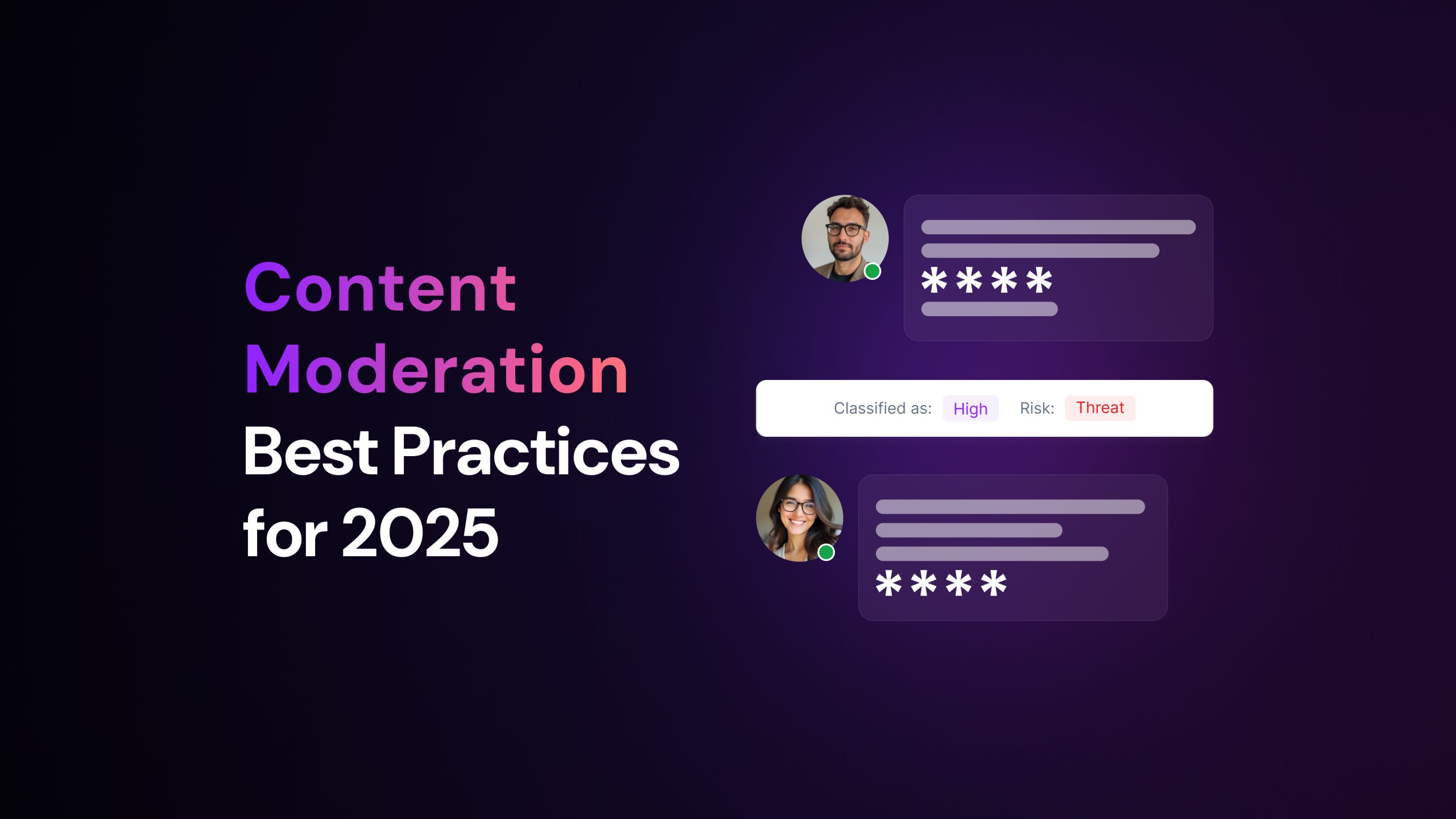Should you focus on native comment systems or social media comments? The debate over community platforms vs social media is more relevant than ever. Combining both can significantly enhance your brand’s community-building efforts by offering control and deep discussions through native systems, and unprecedented reach with social media platforms.
In this article, we’ll explore why implementing both channels is essential, examine their unique benefits, and provide practical strategies for effectively managing this dual approach.
In brief:
- Native comment systems give you full control over your community and enhance your website’s SEO.
- Social media comments expand your reach and visibility beyond your immediate audience.
- A dual-channel approach maximizes engagement by combining depth and breadth.
- Implementing both requires a unified strategy for moderation, cross-channel interactions, and analytics.
The Strategic Value of Native Comment Systems
Native comment systems offer significant strategic advantages that social media platforms simply can’t match. Implementing a native commenting system on your website grants you complete ownership over your community data and user experience—a fundamental asset for long-term digital strategy.
The control you maintain extends beyond just moderating discussions. You can customize the entire commenting experience to match your brand identity, set specific moderation policies, and retain valuable user engagement data. This highlights the importance of user-generated content, which plays a crucial role in community engagement. Research by Global Reach indicates that over 60% of consumers reconsider purchasing from a brand based on comments, which highlights the importance of controlling your commenting environment.
From an SEO perspective, native comments contribute significantly to your website’s performance:
- Generate fresh, keyword-rich content that search engines value
- Increase time-on-page metrics
- Create additional indexable content
These elements are akin to the benefits of live blogging, where constant engagement and fresh content enhance SEO performance. Moreover, native comment systems enable real-time content updates, facilitating immediate audience interaction and keeping your website content current and engaging. Arena’s advanced community features have the potential to enhance SEO efforts and contribute to growth.
Native systems also foster higher-quality discussions. When users engage directly on your website, conversations tend to be more focused and topic-specific compared to social media interactions. Focused engagement like this helps build a more dedicated community around your brand, with regular commenters forming a core group of engaged users.
Data privacy is particularly valuable in the current regulatory environment. With native commenting systems, you maintain GDPR compliance more easily and have complete control over how user data is collected, stored, and used. As a result, understanding and implementing GDPR compliance measures becomes more straightforward. This ownership allows you to gather deeper insights about your audience while protecting their privacy—a capability that’s increasingly important for building trust with your community. Efficiently managing customer data is key in this process. Incorporating interactive elements in OTT platforms can also be part of your strategy to enhance user engagement while maintaining control over data privacy.
Using Social Media Comments for Maximum Reach
Social media comments offer unparalleled opportunities to expand your content’s reach and visibility beyond your immediate audience. When you engage through social platforms, your interactions become visible to your followers’ networks, creating a ripple effect that can significantly amplify your message. These platforms are essential for creating digital communities in today’s transforming social media landscape.
Each social platform provides unique engagement advantages. On LinkedIn, professional discussions can establish thought leadership, as demonstrated by Retirement Healthcare Advisor Robert Klein, who sparked meaningful conversations by commenting on InvestmentNews articles about Social Security and Medicare costs. Twitter’s fast-paced environment enables quick, real-time engagement with trending topics, exemplified by Financial Planner Michael Zmistowski’s timely insights on interest rate discussions.
The algorithmic promotion of engaging comments can dramatically boost your content’s visibility. When users interact with your comments, platforms often showcase these interactions to their connections, creating organic exposure opportunities. Facebook’s engagement algorithms, for instance, helped Financial Planner Cory Boyas extend his reach when he provided expert insights on healthcare company mergers in CNN Money article discussions.
Platform-specific features enhance engagement potential:
- LinkedIn’s professional network amplifies industry-specific discussions
- Twitter’s retweet and quote features help comments reach new audiences
- Facebook’s rich media support allows for more dynamic comment interactions
- Instagram’s Stories can highlight engaging comment threads
These social platforms also offer sophisticated analytics tools to track engagement metrics, helping you refine your commenting strategy based on performance data. Participating in relevant discussions across these channels helps you establish your brand’s presence and maximize visibility by taking advantage of each platform’s unique strengths.
Implementation Strategies for a Dual-Channel Approach
Set Up and Integrate Your Systems
Start by selecting tools that seamlessly integrate with your existing systems. Your native commenting system should work smoothly with your CMS while providing essential features like spam control and moderation capabilities. For social media management, implement a centralized dashboard to monitor and respond to comments across all platforms from one location.
Consider data privacy implications when setting up your native system. You’ll need to ensure GDPR compliance and proper handling of user data, especially since you’ll have direct control over this information on your own platform. Incorporating interactive elements in OTT can also be part of your strategy to enhance user engagement while maintaining control over data privacy.
Establish a Unified Moderation Framework
Create consistent community guidelines that apply across both your website and social media channels. Your moderation policy should:
- Define acceptable behavior and content
- Establish clear consequences for violations
- Set response time targets (aim for within 24 hours)
- Outline procedures for handling both positive and negative feedback
- Include spam management protocols
Manage Cross-Channel Interactions
Adopting an omnichannel approach can help streamline your efforts. Implement these strategies to maintain effective engagement across both channels:
- Use a centralized management tool to monitor all comments from one dashboard
- Maintain consistent brand voice and messaging across platforms
- Cross-promote discussions between your website and social channels
- Highlight interesting social media comments in your blog posts and vice versa
- Tailor responses to each platform’s unique characteristics while maintaining your core message
Monitor and Analyze Engagement
Set up a comprehensive monitoring system to track engagement metrics across both channels:
- Track response times and engagement rates
- Compare performance metrics between native and social comments
- Analyze which types of content generate the most meaningful discussions on each platform
- Use insights to refine your content and engagement strategies
- Regularly review moderation effectiveness and community health
Remember to make use of platform-specific features while maintaining consistency in your overall approach. Your native system provides control and depth, while social media offers reach and real-time engagement—use both to their full potential.
Measuring Success Across Both Channels
You need a comprehensive analytics approach to effectively track engagement across native comments and social media platforms. For your website’s comment system, focus on metrics like:
- Comment volume
- Average response time
- Ratio of new versus returning commenters
Pay special attention to time spent on site and how comment interactions correlate with return visits.
For social media comments, track:
- Engagement rates per post
- Sentiment analysis trends
- How effectively comments drive referral traffic back to your website
Monitor the spread of conversations across different platforms and identify which types of content spark the most meaningful discussions.
To streamline this process, implement unified tracking tools that can aggregate data from multiple sources. Platforms like Hootsuite or Brandwatch can help you monitor both native and social media comments from a centralized dashboard, which makes it easier to spot trends and optimize your engagement strategy.
Use this data to make informed decisions about:
- Content topics that generate the most thoughtful discussions
- Optimal times for community manager responses
- Which platforms deserve more attention based on engagement quality
- How to improve cross-pollination between your website and social channels
Look beyond basic metrics like comment counts. Analyze the quality of conversations, user sentiment, and how discussions contribute to your broader community-building goals. Adopting a comprehensive approach to measurement ensures you’re not just collecting data, but using it to strengthen your engagement strategy across all channels.
Conclusion: Maximizing Engagement Through Multi-Channel Strategy
The debate between comment systems and social media comments shouldn’t be about choosing one over the other—it’s about using both to create a comprehensive engagement strategy. Implementing both channels is essential for boosting customer engagement. Native comment systems give you control over your community and valuable first-party data, while social media platforms provide broader reach and quick interactions. Maintaining both channels allows you to build a stronger owned community while benefiting from social media’s amplification potential.
The key is implementing a unified approach that treats both channels as complementary rather than competitive. Consider using a community management platform that can help you centralize these interactions, maintain consistent engagement across channels, and gradually shift meaningful conversations to your owned spaces while maintaining social media presence for discovery and reach.
Ready to see the impact of an effective brand community on your bottom line? Sign up now at Arena and start leveraging our powerful features to boost engagement and retention. Join thousands of brands that trust Arena to turn visitors into loyal customers.



